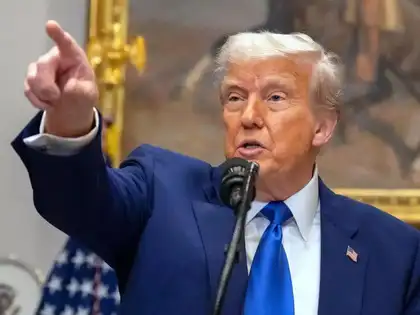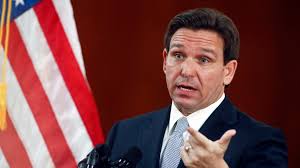In a bold move to reshape U.S. immigration policy and attract significant foreign investment, President Donald Trump announced the launch of the "Gold Card" visa program, set to open for registration in late May 2025. This initiative, designed to replace the existing EB-5 Immigrant Investor Program, introduces a steep $5 million investment threshold for affluent foreign nationals seeking permanent U.S. residency. The program promises to streamline the immigration process for high-net-worth individuals while aiming to bolster the U.S. economy through substantial capital inflows. However, the proposal raises questions about its legal foundation, economic impact, and broader implications for global wealth migration. This article delves into the details of the Gold Card visa, its objectives, challenges, and the hidden truths behind this ambitious policy shift.
Overview of the Gold Card Visa Program
The Gold Card visa program, as announced by Commerce Secretary Howard Lutnick at Axios’ “Building the Future” event in Washington, DC, on May 21, 2025, is poised to redefine the landscape of U.S. immigration for wealthy investors. Unlike the EB-5 program, which required investments of $1.8 million (or $900,000 in economically distressed areas) and mandated job creation, the Gold Card visa sets a significantly higher bar at $5 million with fewer specified requirements. The program offers a pathway to permanent residency and eventual citizenship, targeting ultra-high-net-worth individuals who view the U.S. as a stable investment destination and a secure residency option.
“I expect there will be a website up called ‘Trump card dot gov’ in about a week,” Lutnick stated. “The details of that will come soon after, but people can start to register.”
This announcement signals a shift toward a more exclusive immigration policy, prioritizing wealth over other criteria. The administration’s goal is to sell up to one million Gold Card visas, potentially generating $5 trillion in foreign investment. Such a figure, while ambitious, underscores the program’s aim to stimulate economic growth on an unprecedented scale.
Key Features of the Gold Card Visa
The Gold Card visa program is structured to appeal to a select group of global investors. Its primary features include:
Investment Requirement: Applicants must invest $5 million directly into the U.S. economy. Unlike the EB-5 program, which tied investments to job creation (at least 10 full-time jobs per investor), the Gold Card program has not yet specified similar mandates, suggesting a focus on capital inflow over employment metrics.
Residency and Citizenship Pathway: Successful applicants will receive permanent residency (a green card) with the opportunity to apply for U.S. citizenship after meeting residency requirements. This pathway is a significant draw for wealthy individuals seeking stability in an uncertain global landscape.
Replacement of EB-5: The Gold Card visa is intended to supplant the EB-5 program, which has been criticized for inefficiencies and vulnerabilities to fraud. By raising the investment threshold and implementing stricter vetting, the administration aims to attract higher-quality investors.
Background: The EB-5 Program and Its Challenges
To understand the significance of the Gold Card visa, it’s essential to examine the EB-5 Immigrant Investor Program, which it seeks to replace. Established in 1990 under the Immigration and Nationality Act (INA), the EB-5 program was designed to stimulate the U.S. economy through foreign investment and job creation. Investors could obtain green cards by investing $1.8 million (or $900,000 in Targeted Employment Areas, such as rural or high-unemployment zones) and creating at least 10 full-time jobs.
Despite its intentions, the EB-5 program has faced persistent criticism. Reports of fraud, mismanagement, and questionable economic benefits have plagued its reputation. For instance, some regional centers—entities that pool EB-5 investments for large-scale projects—were found to misrepresent job creation or divert funds. A 2015 Government Accountability Office report highlighted weaknesses in oversight, noting that the U.S. Citizenship and Immigration Services (USCIS) lacked robust mechanisms to verify compliance.
In response, Congress passed the EB-5 Reform and Integrity Act (RIA) in 2022, reauthorizing the program through September 30, 2027. The RIA introduced stricter compliance requirements for regional centers, enhanced transparency, and improved investor protections. It also included grandfathering provisions to safeguard investors who filed petitions before September 30, 2026. Despite these reforms, President Trump has argued that the EB-5 program remains flawed, citing ongoing fraud concerns.
“We’re going to be putting a price on that card of about $5 million, and that’s going to give you green card privileges, plus,” Trump stated, without elaborating on the “plus.”
Jake Campbell, senior counsel for immigration at Seyfarth, noted that Trump’s remarks overlooked the RIA’s improvements. The ambiguity of the “plus” in Trump’s statement has sparked speculation about additional benefits, such as expedited processing or exclusive investment opportunities, though no details have been confirmed.
Legal Hurdles for the Gold Card Visa
One of the most significant challenges facing the Gold Card visa is its legal foundation. The Immigration and Nationality Act, in its current form, does not provide for a program like the Gold Card. Implementing it would require either congressional approval through an amendment to the INA or an executive action that could face scrutiny from the Supreme Court.
President Trump has a history of pursuing unorthodox immigration policies, such as the 2017 travel ban, which faced multiple legal challenges before being upheld in a modified form. The Gold Card program could follow a similar path, with the administration banking on judicial deference to executive authority. However, bypassing Congress risks legal challenges from advocacy groups or affected stakeholders, particularly given the EB-5 program’s existing authorization through 2027.
Economic Context: Wealth Concentration in the U.S.
The Gold Card visa program comes at a time when the U.S. continues to dominate global wealth creation. According to the 2025 Henley & Partners Wealth Report, the U.S. accounts for 34% of global liquid wealth and is home to 37% of the world’s millionaires—approximately 6 million individuals with liquid assets exceeding $1 million. Between 2014 and 2024, the U.S. saw a 78% increase in its millionaire population, far outpacing other nations.
This wealth concentration makes the U.S. an attractive destination for high-net-worth individuals, particularly those from regions facing political or economic instability. Countries like China, India, and Russia have seen significant outflows of wealthy individuals seeking residency in stable jurisdictions. The Gold Card visa leverages this trend, positioning the U.S. as a premium destination for global elites.
Global Wealth Migration Trends
Wealth migration has become a defining feature of the 21st-century global economy. A 2024 report by the Migration Policy Institute noted that high-net-worth individuals are increasingly seeking residency or citizenship in countries offering political stability, robust legal systems, and favorable tax environments. The U.S., with its strong economy and established rule of law, remains a top choice.
Programs like Canada’s now-defunct Immigrant Investor Program and Portugal’s Golden Visa have demonstrated the appeal of investment-based residency. However, these programs often faced criticism for inflating real estate markets or enabling money laundering. The Gold Card visa, with its high investment threshold, aims to mitigate such risks by targeting only the wealthiest investors, who are less likely to rely on illicit funds.
Objectives of the Gold Card Visa
The Trump administration has outlined three primary objectives for the Gold Card visa: attracting substantial foreign investment, stimulating economic growth, and reducing fraud associated with previous programs.
Attracting Foreign Investment
By setting a $5 million investment requirement, the Gold Card visa targets ultra-high-net-worth individuals who can inject significant capital into the U.S. economy. The administration’s goal of selling one million visas could theoretically generate $5 trillion, a figure that dwarfs the EB-5 program’s contributions. Since its inception, the EB-5 program has attracted approximately $40 billion in investments, according to USCIS data, making the Gold Card’s ambitions extraordinarily bold.
These funds could be directed toward infrastructure, real estate, or technology sectors, though the lack of specific guidelines raises questions about how investments will be allocated. Unlike the EB-5 program, which prioritized job-creating projects, the Gold Card’s flexibility could allow investments in financial instruments or government bonds, potentially limiting direct economic benefits.
Stimulating Economic Growth
The influx of foreign capital is expected to stimulate economic growth, particularly in industries facing capital shortages. For example, real estate development, a key beneficiary of EB-5 investments, could see renewed activity. However, critics argue that without job creation mandates, the Gold Card visa may primarily benefit wealthy investors and financial institutions rather than the broader economy.
A 2023 study by the Brookings Institution found that EB-5 investments often concentrated in affluent urban areas, exacerbating regional inequalities. The Gold Card program risks amplifying this trend by catering to an even wealthier demographic, potentially neglecting economically distressed regions.
Reducing Fraud
Fraud has been a persistent issue in the EB-5 program, with high-profile cases involving misappropriated funds and falsified job creation reports. The Gold Card visa aims to address this by raising the investment threshold and implementing stricter vetting processes. Wealthier investors, the administration argues, are less likely to engage in fraudulent activities due to their established financial profiles and access to legal resources.
However, the lack of transparency around the program’s implementation raises concerns. Without clear guidelines on investment verification or fund tracking, the Gold Card visa could face similar challenges as its predecessor.
Implications for Investors
The Gold Card visa is designed for ultra-high-net-worth individuals seeking a stable investment environment and secure residency in the U.S. Its $5 million threshold limits accessibility to a small elite, but for those who qualify, the program offers significant benefits.
Attractiveness to Global Elites
For wealthy individuals from countries with political or economic instability, the Gold Card visa provides a pathway to safety and opportunity. The U.S.’s robust legal system, advanced infrastructure, and cultural influence make it a desirable destination. Additionally, the prospect of eventual citizenship enhances the program’s appeal, particularly for families seeking long-term security.
However, the high investment requirement may deter some investors who can access similar programs elsewhere for less. For example, Malta’s Citizenship by Investment program requires investments starting at €700,000, while Portugal’s Golden Visa requires €500,000. The Gold Card’s premium pricing must be justified by unique benefits, such as expedited processing or exclusive investment opportunities.
Risks and Challenges
Investors face several risks, including the program’s uncertain legal status and the lack of detailed guidelines. The EB-5 program’s history of delays and bureaucratic hurdles suggests that the Gold Card visa could encounter similar issues, particularly if demand exceeds administrative capacity. Additionally, the absence of job creation requirements may reduce the program’s economic impact, potentially leading to public backlash.
Hidden Truths and Broader Implications
Beneath the Gold Card visa’s glossy promise lies a complex web of economic, political, and social implications. The program reflects a broader trend of commodifying citizenship, where access to residency is increasingly tied to wealth. This approach raises ethical questions about fairness and equality in immigration policy.
Commodifying Citizenship
Investment-based immigration programs have long been criticized for prioritizing wealth over merit or humanitarian considerations. The Gold Card visa, with its $5 million price tag, amplifies this critique. Critics argue that it creates a two-tiered immigration system, where the wealthy can bypass traditional pathways while others face lengthy backlogs or restrictive policies.
A 2024 report by the Center for American Progress highlighted the inequity of such programs, noting that they often benefit affluent regions while neglecting marginalized communities. The Gold Card visa risks exacerbating this divide, particularly if investments are directed toward already prosperous areas.
Political Motivations
The Gold Card visa aligns with President Trump’s broader immigration agenda, which emphasizes economic contributions and stringent vetting. By targeting ultra-high-net-worth individuals, the program appeals to his base’s desire for controlled immigration while generating revenue to offset other policy priorities. However, the lack of congressional approval could spark political backlash, particularly from lawmakers who view the program as an overreach of executive authority.
Global Competition
The U.S. is not alone in courting wealthy investors. Countries like Australia, Canada, and several European nations offer similar programs, often with lower investment thresholds. The Gold Card visa must compete in a crowded market, where investors weigh factors such as cost, processing times, and quality of life. The U.S.’s geopolitical influence and economic strength give it an edge, but the program’s success depends on its execution and transparency.
Next Steps for Prospective Applicants
For those interested in the Gold Card visa, the immediate priority is monitoring official announcements for the launch of the registration portal, expected at ‘Trump card dot gov.’ Applicants should prepare documentation verifying their financial capacity and investment plans. Given the program’s high threshold, legal and financial advisors will play a critical role in navigating eligibility criteria and ensuring compliance.
The administration has promised a streamlined process, but the lack of detailed guidelines suggests that early applicants may face uncertainty. Consulting with immigration experts familiar with the EB-5 program could provide valuable insights, given the similarities between the two initiatives.
Conclusion
The Gold Card visa represents a bold, if controversial, step in U.S. immigration policy. By targeting ultra-high-net-worth individuals with a $5 million investment requirement, the program seeks to attract significant foreign capital while addressing the shortcomings of the EB-5 program. However, its legal uncertainties, high cost, and lack of transparency raise significant challenges. As the U.S. continues to dominate global wealth creation, the Gold Card visa could reshape the landscape of investment-based immigration, but its success will depend on careful implementation and public acceptance.
















0 Comments